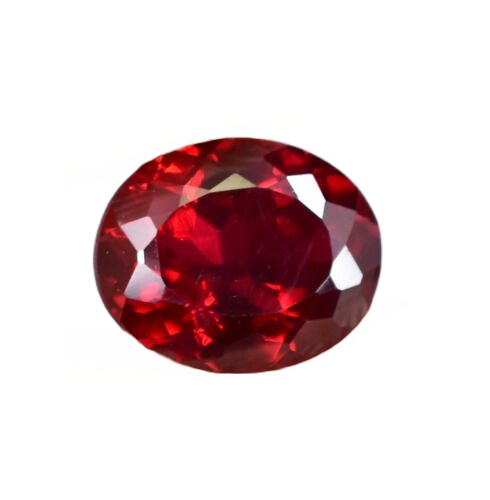5.56 CT Natural Painite Certified Oval Cut Loose Gemstone
Gemstone Color: Red
Gemstone Type: Painite
Cut Grade: Excellent
Certified: GIT Certification
Item Length: 11.2 mm
Item Depth: 6.01 mm
Item Width: 9.3 mm
Gemstone Cut: Oval
Gemstone Creation: Natural
Gemstone Treatment: Clarity Enhanced Heated Diffusion
Gemstone Clarity: VVS1
Country/Region of Manufacture: India
Country of Origin: Burma
5.56 CT CERTIFIED PAINITE OVAL CUT GEMSTONE
Until 2001, only three Painite crystals were known to exist. Since then, additional discoveries have produced many more specimens of this deep red gemstone, but facetable material remains very rare.
Painites are found only in Myanmar (Burma). The first Painite specimen, a single crystal, was identified as a new gem species in 1957. Until 2001, only two more crystals were found. Since then, more Painites have been discovered. Over a thousand crystals and fragments have now been recovered, but most of this material isn't facetable. It is the most valuable non-diamond gemstone.
What is Painite?
Painite is a rare gem and a member of the borate family of minerals. Painite consists of boron and zirconium and was once mistaken for ruby.
Painite is an exceptional gem in many ways. For one, only a little over 300 painite crystals have been discovered. For another, its rarity means it has a very high value. Painite's average price per carat is between $50,000 and $60,000.
You won't find Painite as a common jewelry gemstone. It has a Mohs hardness rating of 8 out of 10. However, Painite is very brittle.
Due to its rarity and brittle nature, Painite is primarily displayed in museums. Therefore, it is not widely available for the commercial market, but it does hold special meaning for its purported healing properties.
History of Painite
Painite was likely discovered much earlier and mistaken for a ruby. Painite was discovered as a gem in the 1950s by British mineralogist Arthur Pain. The Painite crystal weighed a mere 1.7 grams. A museum in Britain technically found Painite earlier but labeled it as a ruby.
What's curious is that a mere two crystals of Painite were discovered several decades after. By 2005, just over two dozen Painite crystals were discovered. In 2006, the largest source of Painite yet was found in Myanmar. Though the value was not as high as the previous crystals, it was a sign that more Painite might be discovered.
Today, Painite still has only ever been discovered in Myanmar. There are only a few hundred crystals officially identified as Painite. However, many Painite crystals are displayed in a Swedish laboratory in Lucerne, the Smithsonian, the California Institute of Technology, and the British Museum. The GIA (Gemological Institute of America) also carries Painite. Kaufman & Kaufman rates Painite as one of the most desirable investment gemstones in the marketplace. We are very fortunate to have two in our inventory.

